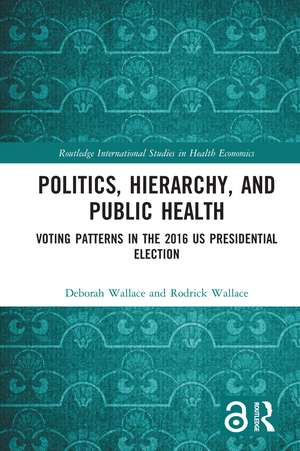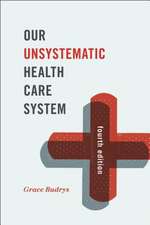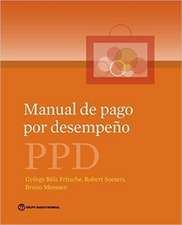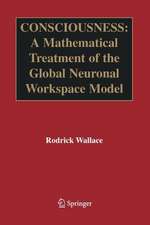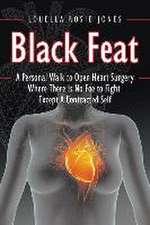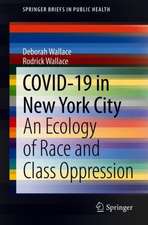Politics, Hierarchy, and Public Health: Voting Patterns in the 2016 US Presidential Election: Routledge International Studies in Health Economics
Autor Deborah Wallace, Rodrick Wallaceen Limba Engleză Paperback – 31 mar 2021
The authors argue that the unequal power relations that result in eroding public health in the nation and, in particular, in the Trump-voting states, largely cascade from the collapse of American industry, and they analyze the Cold War roots of that collapse. In two largely independent chapters on economics, they explore both the suppression of countervailing forces, such as organized labor, and the diversion of technical resources to the military as essential foundations to the population-level suffering that expressed itself in the 2016 presidential election.
This interdisciplinary book has several primary audiences: creators of public policies, such as legislators and governmental staff, public health professionals and social epidemiologists, economists, labor union professionals, civil rights advocates, political scientists, historians, and students of these disciplines from public health through the social sciences.
| Toate formatele și edițiile | Preț | Express |
|---|---|---|
| Paperback (1) | 379.97 lei 43-57 zile | |
| Taylor & Francis – 31 mar 2021 | 379.97 lei 43-57 zile | |
| Hardback (1) | 762.57 lei 43-57 zile | |
| Taylor & Francis – 14 iun 2019 | 762.57 lei 43-57 zile |
Preț: 379.97 lei
Nou
Puncte Express: 570
Preț estimativ în valută:
72.73€ • 79.03$ • 61.13£
72.73€ • 79.03$ • 61.13£
Carte tipărită la comandă
Livrare economică 21 aprilie-05 mai
Preluare comenzi: 021 569.72.76
Specificații
ISBN-13: 9780367727987
ISBN-10: 0367727986
Pagini: 154
Dimensiuni: 156 x 234 x 13 mm
Greutate: 0.23 kg
Ediția:1
Editura: Taylor & Francis
Colecția Routledge
Seria Routledge International Studies in Health Economics
Locul publicării:Oxford, United Kingdom
ISBN-10: 0367727986
Pagini: 154
Dimensiuni: 156 x 234 x 13 mm
Greutate: 0.23 kg
Ediția:1
Editura: Taylor & Francis
Colecția Routledge
Seria Routledge International Studies in Health Economics
Locul publicării:Oxford, United Kingdom
Public țintă
Postgraduate and UndergraduateCuprins
PART I The context
1 What we learned from the right-to-work study
2 Socioeconomic structures of the Trump and Clinton sets of states
3 Life and death in America
PART II The findings
4 Mortality rates of infants and children under age 15
4.1 Infant mortality
4.2 Deaths of children 1–4 years old per 100,000
4.3 Deaths of children 5–9 and 10–14 years of age
4.4 Excess years of life lost in Trump states
5 Vital blood vessels: mortality rates from coronary heart and from cerebrovascular disease
5.1 Introduction
5.2 Coronary heart mortality rates below age 75
5.3 Cerebrovascular mortality rates
6 Obesity and diabetes
6.1 Introduction
6.2 Adult obesity prevalence in 2015: comparison of Trump and Clinton sets of states
6.3 Diabetes mortality rates
6.4 Obesity, diabetes, coronary heart disease, and cerebrovascular disease
7 Risk behaviors
7.1 Eating your veggies and fruit
7.2 Vehicle fatality incidence 2015
7.3 Cigarettes and alcohol
7.4 Unsafe sex: births to teenagers and gonorrhea
7.5 Homicide
7.6 Index of risk behavior
7.7 Why risk behaviors?
8 Alzheimer’s disease and state voting patterns
9 Roots of health patterns of Trump- and Clinton-voting states
PART III Power and inequality
10 The collapse of countervailing force
10.1 Introduction
10.2 The control of inherent instability
10.3 Failure of control I
10.4 Failure of control II
10.5 Discussion and conclusions
11 Pentagon capitalism: the Cold War and US deindustrialization
11.1 Introduction
11.2 Ratchet dynamics I
11.3 Ratchet dynamics II
11.4 Ratchet dynamics III
11.5 Ratchet dynamics IV
11.6 Failure of efficiency in economic enterprise
11.7 The hysteresis of industrial collapse
11.8 Discussion and conclusions
12 Countervailing forces and their geographic ebbing: public health changes
13 References
14 Data sets and their sources
14.1 Economic
14.2 Demographic
14.3 Education/social
14.4 Political engagement
14.5 Life expectancy and death rates
14.6 Obesity and diabetes prevalence
14.7 Other risk behaviors
1 What we learned from the right-to-work study
2 Socioeconomic structures of the Trump and Clinton sets of states
3 Life and death in America
PART II The findings
4 Mortality rates of infants and children under age 15
4.1 Infant mortality
4.2 Deaths of children 1–4 years old per 100,000
4.3 Deaths of children 5–9 and 10–14 years of age
4.4 Excess years of life lost in Trump states
5 Vital blood vessels: mortality rates from coronary heart and from cerebrovascular disease
5.1 Introduction
5.2 Coronary heart mortality rates below age 75
5.3 Cerebrovascular mortality rates
6 Obesity and diabetes
6.1 Introduction
6.2 Adult obesity prevalence in 2015: comparison of Trump and Clinton sets of states
6.3 Diabetes mortality rates
6.4 Obesity, diabetes, coronary heart disease, and cerebrovascular disease
7 Risk behaviors
7.1 Eating your veggies and fruit
7.2 Vehicle fatality incidence 2015
7.3 Cigarettes and alcohol
7.4 Unsafe sex: births to teenagers and gonorrhea
7.5 Homicide
7.6 Index of risk behavior
7.7 Why risk behaviors?
8 Alzheimer’s disease and state voting patterns
9 Roots of health patterns of Trump- and Clinton-voting states
PART III Power and inequality
10 The collapse of countervailing force
10.1 Introduction
10.2 The control of inherent instability
10.3 Failure of control I
10.4 Failure of control II
10.5 Discussion and conclusions
11 Pentagon capitalism: the Cold War and US deindustrialization
11.1 Introduction
11.2 Ratchet dynamics I
11.3 Ratchet dynamics II
11.4 Ratchet dynamics III
11.5 Ratchet dynamics IV
11.6 Failure of efficiency in economic enterprise
11.7 The hysteresis of industrial collapse
11.8 Discussion and conclusions
12 Countervailing forces and their geographic ebbing: public health changes
13 References
14 Data sets and their sources
14.1 Economic
14.2 Demographic
14.3 Education/social
14.4 Political engagement
14.5 Life expectancy and death rates
14.6 Obesity and diabetes prevalence
14.7 Other risk behaviors
Notă biografică
Deborah Wallace is an ecologist who pioneered the transfer of ecosystem analytical approaches to social epidemiology and health inequality.
Rodrick Wallace is a research scientist in epidemiology at the New York State Psychiatric Institute. He is well-known for modeling cognitive processes ranging from cellular-level immunity up to national economies and to decision-making in large institutions.
Rodrick Wallace is a research scientist in epidemiology at the New York State Psychiatric Institute. He is well-known for modeling cognitive processes ranging from cellular-level immunity up to national economies and to decision-making in large institutions.
Descriere
The authors examine previously observed concepts of early aging and death, such as socioecomic stresses and health inequalities, to state-level populations and survey in detail the grinding pressures of steep economic, social, and political hierarchy on hundreds of millions of people.
